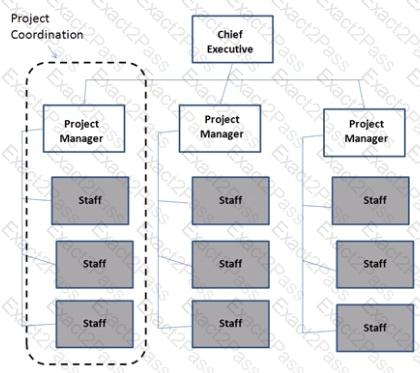Last Update 17 hours ago Total Questions : 1305
The Certified Associate in Project Management (CAPM) content is now fully updated, with all current exam questions added 17 hours ago. Deciding to include CAPM practice exam questions in your study plan goes far beyond basic test preparation.
You'll find that our CAPM exam questions frequently feature detailed scenarios and practical problem-solving exercises that directly mirror industry challenges. Engaging with these CAPM sample sets allows you to effectively manage your time and pace yourself, giving you the ability to finish any Certified Associate in Project Management (CAPM) practice test comfortably within the allotted time.
Which type of analysis systemically gathers and analyzes qualitative and quantitative information to determine which interests should be taken into account throughout the project?
What is the total float of the critical path?
Sensitivity analysis is typically displayed as a/an:
Which schedule compression technique has phases or activities done in parallel that would normally have been done sequentially?
The integrative nature of project management requires which Process Group to interact with the other Process Groups?
Which of the following processes are part of the Project Integration Management Knowledge Area?
A complete set of concepts, terms, and activities that make up an area of specialization is known as:
What is the estimate at completion (EAC) if the budget at completion (BAC) is $100, the actual cost (AC) is $50, and the earned value (EV) is $25?
Which input to the Plan Risk Management process provides information on high-level risks?
Plan Schedule Management is a process in which Knowledge Area?
Which tool or technique of the Define Activities process allows for work to exist at various levels of detail depending on where it is in the project life cycle?
Which process involves monitoring the status of the project to update the project costs and managing changes to the cost baseline?
Which sentence summarizes the salience model?
A project is delivering an integrated solution to an external client on a fixed-price contract. The project has a significant technical component and has a dedicated technical project manager working with a business program manager and the client's project manager. The technical lead is requesting two new developers.
Which plan should the project manager use to identify who is responsible for finding the budget for additional developers?
The number of potential communication channels for a project with 5 stakeholders is:
Which input may influence quality assurance work and should be monitored within the context of a system for configuration management?
An input to the Plan Procurement Management process is:
The process of prioritizing risks for further analysis or action is known as:
In the Plan Stakeholder Management process, expert judgment is used to:
In the Plan Procurement Management process, which source selection criteria analyzes if the seller's proposed technical methodologies, techniques, solutions, and services meet the procurement documents requirements?
An output of the Manage Stakeholder Engagement process is:
An example of a group decision-ma king technique is:
When should quality planning be performed?
Which tool or technique is used in the Plan Scope Management process?
Which item is an input to the Define Activities process?
The Perform Integrated Change Control process occurs in which Process Group?
A logical relationship in which a successor activity cannot start until a predecessor activity has finished is known as:
Which Process Group and Knowledge Area include the Sequence Activities process?
When alternative dispute resolution (ADR) is necessary, which tool or technique should be utilized?
Which group is formally chartered and responsible for reviewing, evaluating, approving, delaying, or rejecting changes to the project and for recording and communicating decisions?
Impacts to other organizational areas, levels of service, and acceptance criteria are typical components of which document?
During which process does a project manager review all prior information to ensure that all project work is completed and that the project has met its objectives?
Which characteristic defines the Delphi technique of group decision-making?
The only Process Group that comprises processes that typically occur from the beginning to the end of the project life cycle is:
In which Knowledge Area is the project charter developed?
Which document defines how a project is executed, monitored and controlled, and closed?
Which input provides suppliers with a clear set of goals, requirements, and outcomes?
Which type of organizational structure is displayed in the diagram provided?

What statement describes the function or responsibility of a project manager?
What should a project manager consider to address the full delivery life cycle for large projects?
Which grid shows which resources are tied to work packages?
In what type of organizational structure does a project manager develop their role and work with a team assigned by job function?
Which tool uses an algorithm based on historical data to calculate cost?
For a 10-day project, activity B ' s duration is three days, and activity C’s duration is two days What is the duration of activity A if activities B and C are performed in parallel?
Skills necessary for project management such as motivating to provide encouragement; listening actively; persuading a team to perform an action; and summarizing, recapping, and identifying next steps are known as:
Which type of analysis is used to determine the cause and degree of difference between the baseline and actual performance?
When does the project team determine which dependencies are discretionary?

